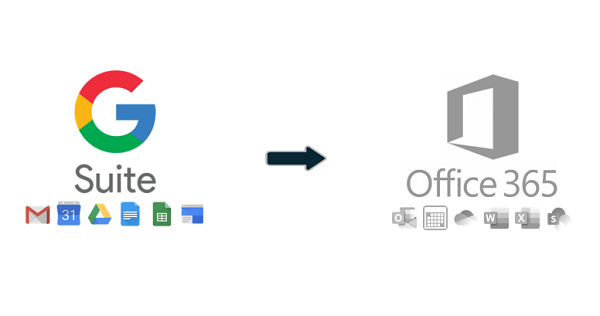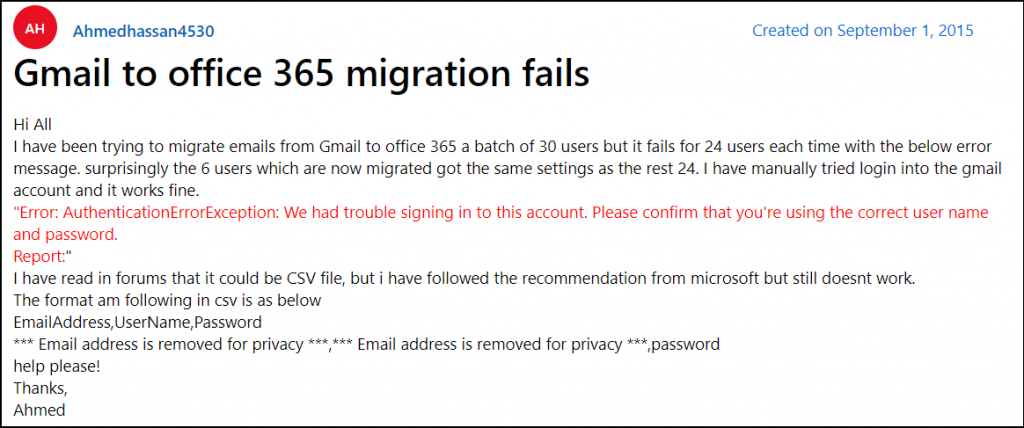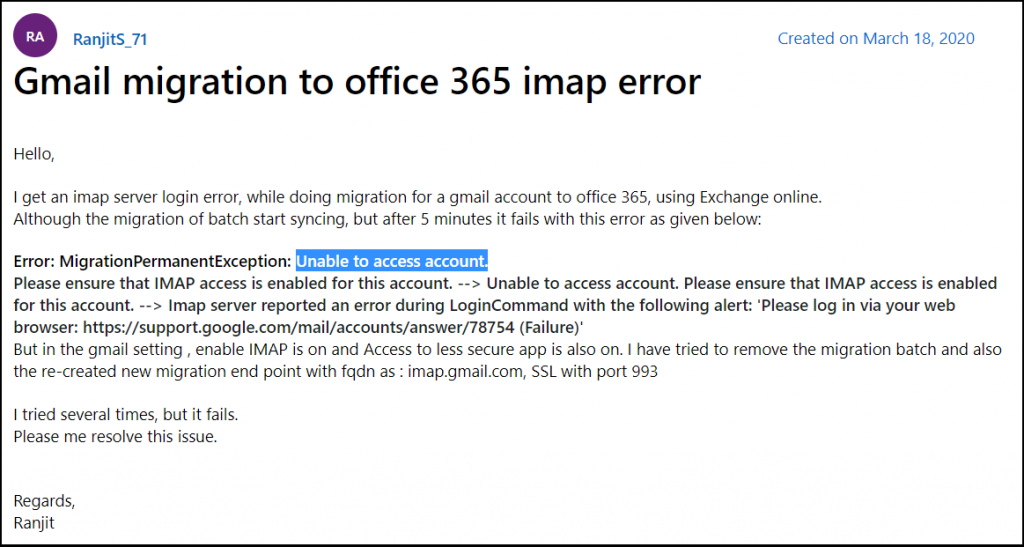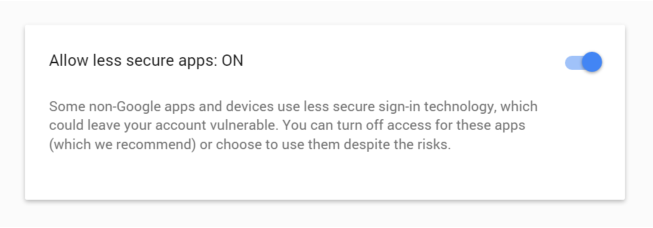G Suite to Office 365 Migration Failed – Troubleshooting IMAP Migration


Getting stuck while using the manual method for G Suite to Office 365 migration is a common scenario. It involves a lot of steps and all the complications often lead to dismal result.
We have gone through some scenarios and explained the tricks to troubleshoot the most common errors encountered during G Suite to Office 365 migration.
User Scenarios:


These two are not the only errors encountered by users. Because of privacy concerns, while we cannot show you other user queries, we will state them and provide proper countermeasures for them in this article.
G Suite to Office 365 Migration Failed – Most Common Errors
Error 1
Error: We had trouble signing into this account. Please confirm that you’re using the correct username and password.

If you are encountering this error, do the following:
- Make sure all the user details are correct.
- If you are 100% sure that all the user details are correct, then enable the “Allow less secure apps” in the Google security settings. The steps for this are as follows:
- Sign in to the G suite user account by clicking on https://myaccount.google.com/intro/security?pli=1#signin
- Set the Allow less secure apps settings to ON.

Office 365 will now be able to connect to the G Suite user account via IMAP and hence the migration process can carry on without failure.
Error 2
E-mail migration batch “migrationname” has finished – with errors
When running migration, if you get an error report via email that says ‘Email migration batch <name> has finished – with errors’, it has one meaning.
The migration users already exist and you are trying the migrate the same users. It happens because the migration batch is already created in Exchange Admin Center and you are trying to migrate again with a new batch containing same user accounts.
So, you must first delete the migration batch from EAC.
Continuing
This is linked with the previous error. Many times, when deleting the migration batch, it stucks on the status ‘Removing’. You will need to bypass this status and delete the entire batch via Powershell.
To do this,
- Connect Exchange Online via PowerShell
- Type Get-MigrationBatch.
- Note the batch that has status set to removing, then type Remove-MigrationBatch – Identity migrationname

- Use Remove-MigrationBatch -Identity migrationname –Force for forceful removal.
Error 3
The user “email@address.com” already exists, but the migration batch that includes it couldn’t be found
If you ever get this error in your report, remove it by using PowerShell. The command is as follows:
- Run Get-MigrationUser
- Then run Get-MigrationUser | Remove-MigrationUser –Force

- Again run Get-MigrationUser to confirm that there are no more users.
Now, run the G Suite to Office 365 migration from beginning and it should work again.
Error 4
“Errors pertaining to the users list submitted via the CSV file”
While this one is an easy error to fix, it is one of the most frequently occurring ones. This can be fixed by making sure the submitted CSV migration file is:
- Not empty.
- Uses comma-separated formatting (CSV file).
- Does not contain more than 50,000 rows.
- Has the required attributes in the header row.
- Has rows with the same number of columns as the header row.
Example:

This marks the end of the errors. We will update it for new errors and issues in the future as we encounter them.
If you are still stuck with the migration, then you can consider boycotting the tedious manual method and opt for G Suite to Office 365 professional tool. If you haven’t started yet and are on the lookout for potential errors and roadblocks, you can avoid them all with the professional tools as well. Its all up to you anyways.
Avoid All Errors – Use a Professional G Suite to Office 365 Migration Tool or Service
With manual G Suite to Office 365 migration methods, users face many limitations and errors. Therefore, for convenient and easy migration, it is better to opt for the trusted, proven and end-to-end cloud migration tool – SysTools G Suite to Office 365 Migration.
With this convenient application, you can do the whole task yourself without any complications. And even if you are met with some inconveniences, the support team can get you out of them with ease. Let SysTools handle the complete migration or simply take their help in clearing pre-requisites and do the whole migration yourself. Its all up to you.
The tool migrates emails, contacts, calendars, documents (you can choose what you want) for multiple user accounts at once. You can even try the demo version which works for 2 user accounts to see what you are getting into.
Advantages of Professional Method:
- Complete G Suite to Office 365 Step by Step mIgration
- Delta migration option available
- Choose your data category to migrate: Emails, Contacts, Calendars, Documents
- Re-run migration option to counter the migration failures due to poor internet or power loss.
- Available for Windows and Linux systems.
- Filters for migrating selective data items
- Complete migration report for all users
Complete Working Video Playlist:
Conclusion
In this article, we have tried to include all the common errors that leads to G Suite to Office 365 failed status. We have mentioned methods to troubleshoot these errors in a convenient manner. So, you can easily resolve the failure and turn it into success within a couple of minutes. If you are still stuck with the problems, then we recommend you to use a professional tool to avoid the errors.